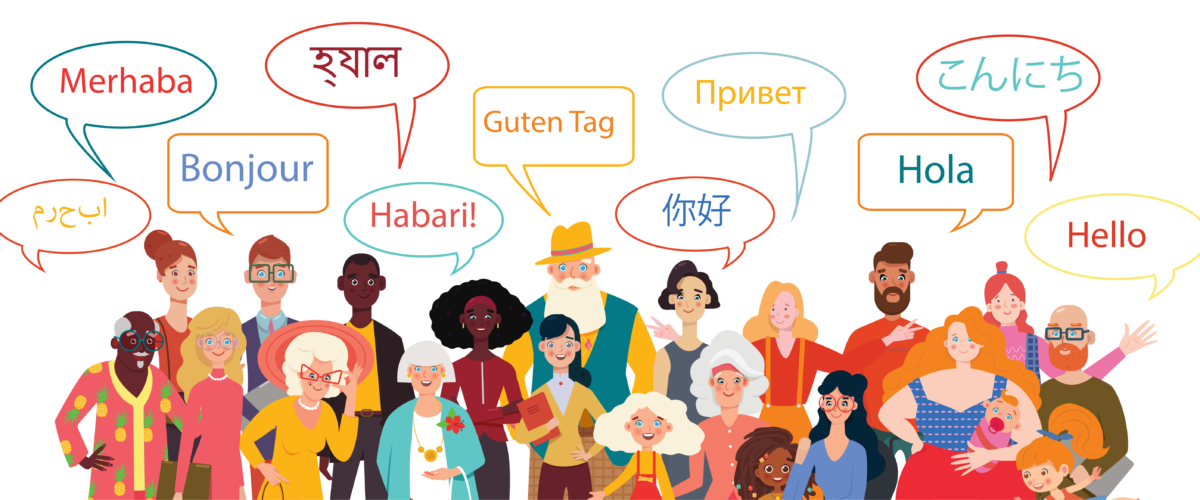Today, globalization is ongoing and even permanent, and it recognizes the need to build bridges between individuals of different nations, cultures, and races.
Cultures throughout the world have become more accessible because of globalization. Companies and consumer cultures worldwide are becoming more and more similar as the world becomes more connected, which raises rivalry between enterprises. Supply and demand must learn to work across cultural boundaries and build connections that allow the free flow of products and services. Globalization has made it easy to learn about many cultures and traditions. Cross-cultural connections, communication, and understanding have increased because of modern globalization. The media and modernism have facilitated countries’ integration into the global economy. This is advantageous in terms of people’s mobility and cultural links. The success of a corporation is directly linked to the quality of its negotiations. Being well-prepared and understood by both sides is critical for international business success. A large spectrum of cultural distinctions is required for international trade. Cultural activities have influenced multinational firms in different ways throughout the process. When working with groups from various backgrounds, cultural differences demand the adoption of a range of negotiating approaches.
Ethnocentrism

We all have a natural affinity to see the world through our unique lens as humans. Ethnocentrism develops when we believe that our method of doing and perceiving things is the only way to accomplish something. As a result, we adopt a negative attitude toward activities that contradict our worldview. We find the conduct of others weird and unacceptable. Because of ethnocentrism, there may be a negative ‘us versus them’ mentality. Ethnocentric individuals may choose not to connect with people from other cultures because they consider them inferior to their own.
Impact of Language

As a result of their superior language skills, some people are unable to communicate effectively with those who do not speak the same language. Individuals may not be able to get the information they need because they are not proficient in the language of the other person. Cross-cultural communication is hampered by language barriers. When someone has trouble comprehending the language of the other party, fails to grasp the body language of the other party, or utilizes poor or incorrect translations, language can act as a barrier to communicating. Language knowledge alone isn’t enough for cross-cultural communication; it’s also important to be aware of nonverbal behavior and cultural norms. Since they are unable to communicate effectively in the language of the other person because of their lack of proficiency in the language, those who are able to read between the lines and discern hidden meanings, motives, and intentions may be deprived of the information they need.
In turn, this might have an effect on people’s abilities and output.
Values at Odds
People’s actions are affected by the ideals that are invisible to them. Cultural confrontations occur when the behavior of others undermines our values. Conflicting values are often the root cause of the behavior that you don’t understand or agree with. It’s not a question of right or wrong; it’s a question of cultural standards.
Benefits of Cross-Cultural Interactions
The capacity for interaction effectively and successfully with people from many cultural origins is becoming increasingly critical. You will never be able to manage a profitable business until you first learn about the culture of your colleagues.
Creativity and Innovation

Better awareness of cultural diversity can inspire creativity and inventiveness. Our culture shapes our perception of the world. In an international team, a wide range of ideas and personal and professional experiences may encourage colleagues to see the workplace and the world in a new light. Various perspectives ignite creativity and drive novel methods for problem-solving and addressing customer requests. Businesses may reap the biggest advantages from workplace diversity by offering an open platform for the exchange of ideas.
When you have access to a range of cultural influences and ideas, it is simpler to be more creative. Because of this, there are cultural influences and opinions on artistic pursuits. When confronted with a challenge or difficulty at work, having a variety of cultural viewpoints brings up additional possibilities for problem resolution. Developing an open mind needs a greater understanding of various cultures. In today’s continuously changing markets and fast-paced lives, businesses may gain a competitive edge by improving their capacity to think creatively and solve issues quickly.
Challenging the Status Quo
Due to cultural differences, participants are encouraged to ask more questions of one another. A change that could otherwise go unnoticed in an environment with only one culture is more likely when the status quo is questioned.
In multicultural settings, good cross-cultural communication skills are needed. A positive work atmosphere will ensure that you’ll have the knowledge you need. Individuals should endeavor to live by this philosophy to the best of their ability. This might be quite beneficial in terms of attracting people from a variety of backgrounds. The expansion of multiculturalism in the workplace necessitates the development of new abilities in cross-cultural communication. To have more successful personal and professional connections, we need to foster open and flexible communication with people from different walks of life.
Cross-Cultural Interaction in the Workplace

Many people from many cultures have had to relocate because of global commerce. Cross-cultural contact in the workplace has increased. Thanks to organizational reform and innovation, multinational companies prioritize intercultural team comprehension. Managing cross-cultural partnerships requires organizational transformation, curriculum innovation, employee development, and staff mobility. Improving cross-cultural communication skills may be part of an organization’s communication plan, but it may be the first step in promoting employee and corporate success.
Integration and globalization have lowered cross-cultural communication barriers increasing effective relationships globally. Cross-cultural communication provides a learning-friendly, inclusive workplace. A world of better cross-cultural interaction starts now.
Photo: Southworks/Shutterstock
You might also like:
Support us!
All your donations will be used to pay the magazine’s journalists and to support the ongoing costs of maintaining the site.
Share this post
Interested in co-operating with us?
We are open to co-operation from writers and businesses alike. You can reach us on our email at [email protected]/[email protected] and we will get back to you as quick as we can.









